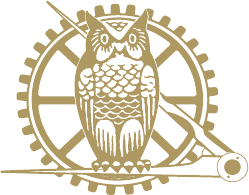Vom Techniker-Kränzchen zum Ball der Industrie und Technik
Geschichte
Der Ursprung des heutigen Balles der Industrie und Technik liegt mit den Aktivitäten des Techniker-Kränzchen-Comités mehr als 170 Jahre zurück und wurde erstmals im Jahre 1842 dokumentiert. Der Reinerlös der Techniker-Kränzchen wurde der Unterstützung würdiger und bedürftiger Hörer des k. k. Polytechnischen Institutes in Wien, der Vorgängerinstitution der Technischen Universität Wien, gewidmet. Eine ähnliche Widmung des Reinerlöses des nunmehrigen Balles der Industrie und Technik besteht auch heute noch zu Gunsten von Forschung und Lehre an der Technischen Universität Wien.Eine verstärkte Einbindung der Industrie wurde 1931 mit der Umbenennung des Techniker-Balles in Ball der Technik und Industrie initiiert. Zwanzig Jahre später erfolgte die heutige Namensgebung mit „Ball der Industrie und Technik“.
Industrialisierung inspirierte Strauss-Familie
Das Zeitalter der Industrialisierung mit seinen vielfältigen Erfindungen löste viel Begeisterung und große Erwartungen aus, von denen auch berühmte Musiker und Komponisten der damaligen Zeit erfasst wurden.So widmete Josef Lanner im Jahr 1842 den Walzer „Geistesschwingen“ den „Hörern der Technik in Wien“.
Von Johann Strauss Vater sind aus dem Jahr 1847 die „Techniker Ball Tänze“ und der Walzer „Die Adepten“ überliefert.
Von Johann Strauss Sohn stammen zahlreiche Musikstücke mit derselben Widmung, darunter 1852 die „Electro-magnetische Polka“, 1853 die „Motor-Quadrille“, 1860 der Walzer „Accelerationen“ und 1865 die „Electrofor-Polka schnell“.
Josef Strauss, selbst Absolvent des k. k. Polytechnischen Institutes in Wien, wurde zu dem Walzer „Mein Lebenslauf ist Lieb’ und Lust“, als er 1868 auf dem Techniker Ball dirigierte, ganz plötzlich inspiriert. Der Zettel, auf dem er rasch die Noten der Hauptmelodie festhielt, war lange Zeit im Besitz des Techniker-Cercle, ging aber im 2. Weltkrieg leider verloren. Dieser Walzer ist seither der traditionelle Eröffnungswalzer unseres Balles.
Josef Strauss widmete den Technikern die Walzer „Streichmagnete“ und „Combinationen“ (1863 bzw. 1865) und die Polka française „Tanz-Regulator“ (1868).
Von Eduard Strauss stammen einige dem Comité des Techniker Balles gewidmete Tänze, die mit technischen Erfindungen zu tun hatten, wie zum Beispiel 1878 die „Telephon-Polka“, 1880 die Schnell-Polka „Hectograph“ und 1881 die Polka Mazur „Herzenstelegraf“.
Aus den überlieferten Unterlagen ist zu entnehmen, dass Johann Strauss Vater, Johann Strauss Sohn, Josef und Eduard Strauss persönlich bei unseren Kränzchen und Bällen als Dirigenten aufgetreten sind.
Damenspende
Die Ballveranstalter überreichten als Damenspende kunstvoll gefertigte Miniaturmodelle der damals gerade aktuellen technischen Erfindungen bzw. Konstruktionen, wie z.B. einen Edison Phonograph oder das Riesenrad, die mit einem Häkchen am Ballkleid befestigt werden konnten.Der Ball
Zu Zeiten der Monarchie war jeweils ein Mitglied des Kaiserhauses Protektor des Balles, so von 1892 bis 1911 Erzherzog Ferdinand Karl, 1912 gefolgt von Erzherzog Leopold Salvator.In der ersten Republik hatten Spitzenpolitiker, wie der zu dieser Zeit amtierende Bundeskanzler, das Patronat über den Ball übernommen. In der zweiten Republik standen die Bälle der Industrie und Technik unter dem Ehrenschutz der jeweiligen Bundespräsidenten oder Bundeskanzler, die auch wiederholt persönlich die Eröffnung des Balles vornahmen.
Das Jungdamen- und Jungherrenkomitee, angeführt von den Ball-Präsidenten, eröffnet den Ball mit einer Polonaise, der Fledermausquadrille und dem traditionellen Linkswalzer zu Josef Strauss’ „Mein Lebenslauf ist Lieb’ und Lust“.
Der Einzug der Ehrengäste mit Repräsentanten aus Industrie und Wirtschaft, gefolgt von den Rektoren sowie Regierungsmitgliedern, unterstreicht die gesellschaftliche Bedeutung des Balles. Die Verbindung zur Technischen Universität Wien wird durch eine hohe Anzahl akademischer Würdenträgerinnen und Würdenträger honoriert.
Der Besucherrahmen des Balles wird von Mitgliedern des Techniker-Cercles und ihrem Freundes- und Verwandtenkreis geprägt. Der Techniker-Cercle übernimmt alljährlich die Organisation und gewährleistet durch ehrenamtliche Tätigkeiten eine rauschende Ballnacht und ein erfolgreiches Ergebnis.
Für beschwingte Stimmung sorgen die stets zahlreich vorhandene, tanzfreudige Jugend und zwei im „Goldenen Saal“ abwechselnd aufspielende Kapellen, die eine spezialisiert auf Wiener Walzer, die andere auf internationale Standard-Tänze. Die Disco im „Gläsernen Saal“ gewährleistet den Umstieg in die modernen Rhythmen und auch einen Wechsel in eine Bar-Atmosphäre.
Mit der Mitternachtsquadrille, an der jeder Ballbesucher teilnehmen kann, erreicht der Ball einen stimmungsmäßigen Höhepunkt.
Jene, die bis zum traditionellen Ballende um 5 Uhr früh ausgeharrt haben, erleben mit „Brüderlein fein“, gespielt mit zartestem Geigenklang, einen besinnlichen Ausklang des Ballfestes.
Schon seit Jahren zeichnet den Ball der Industrie und Technik die Verbindung der Technik, Industrie, Wirtschaft und Wissenschaft mit der Frische der Jugend aus. Mit seiner echten Elegance und seiner festlichen Stimmung zählt er zu den gesellschaftlichen Höhepunkten der Wiener Ballsaison.
